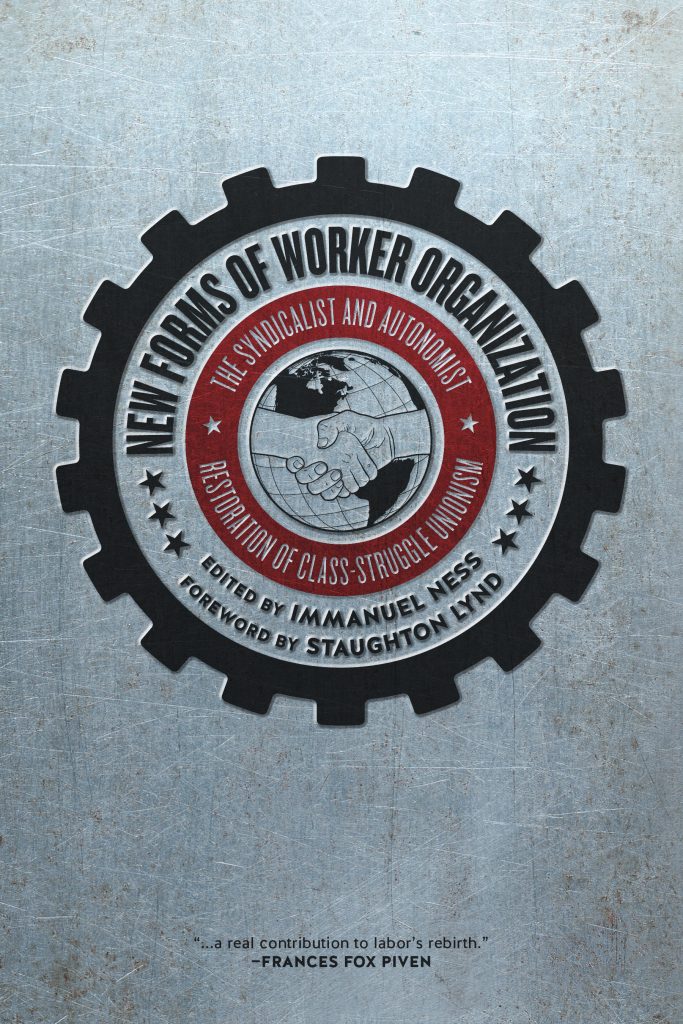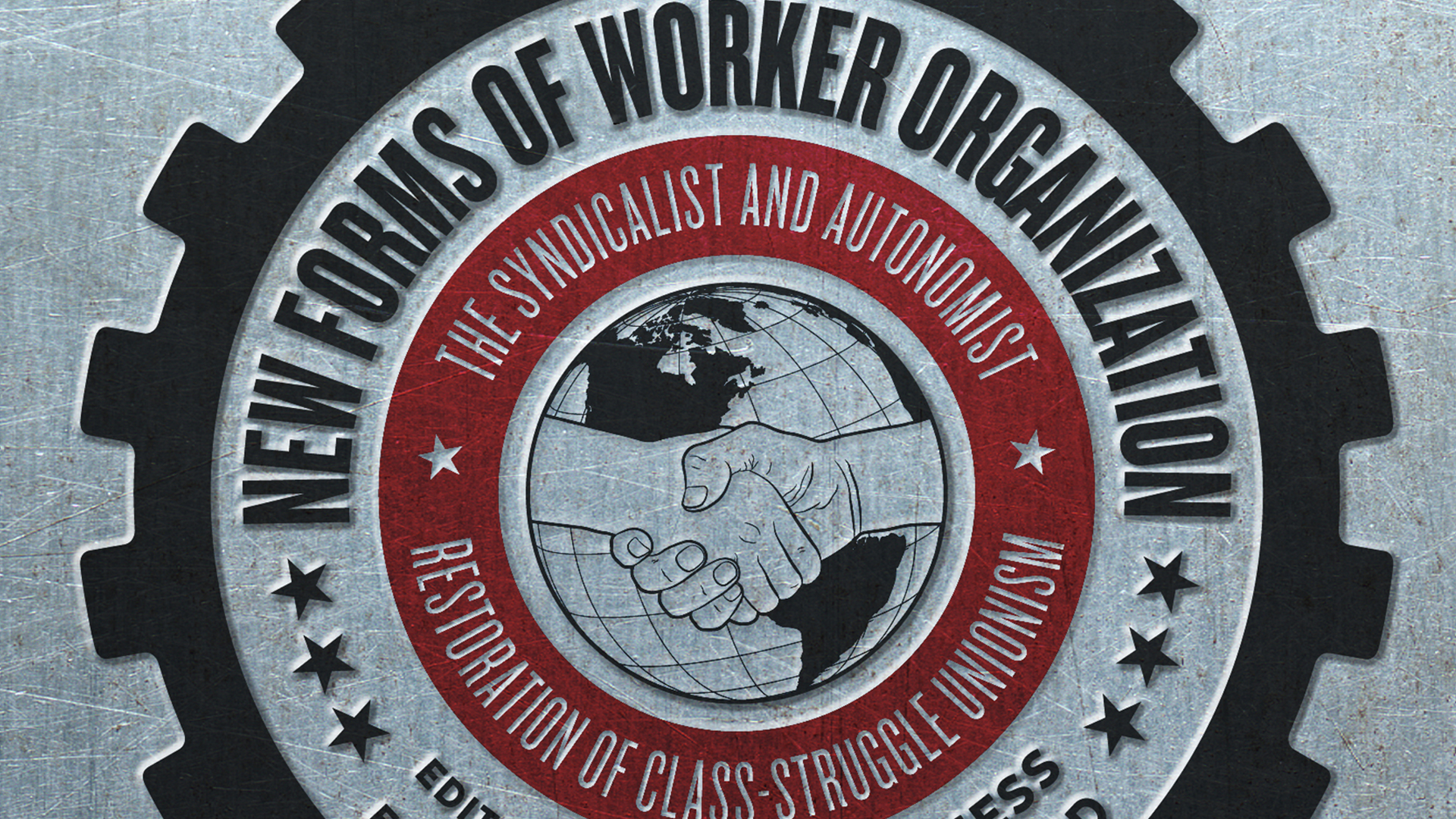
By Stephen Campbell
Anthropology of Work Review
November 3rd, 2014
There has, in recent years, been no shortage of anthropologists framing their research in terms of precarity, which contextualizes precarious work within the social and human fallout of late 20th-century neoliberal restructuring.
Anthropological inquiries into the socially constitutive effects of neoliberalization or what might be seen as the creative outcomes of neoliberalism’s creative destruction generally have been less explicit. It is in this vein that Immanuel Ness’s recent edited volume, New Forms of Worker Organization: The Syndicalist and Autonomist Restoration of Class Struggle Unionism, emerges with particular relevance for anthropologists.
The book is a collection of globally dispersed case studies of workers’ self-organization and collective action. Only one contributing author (Genese Marie Sodikoff) is an anthropologist; the remainder are mostly sociologists, political scientists, labor activists and organizers, and nongovernmental organization researchers. Nonetheless, the book advances an important thesis, which invites ethnographic inquiry from those whose research lies within the anthropology of work.
The foreword is written by radical labor historian Straughton Lynd, whose own writing on solidarity unionism informs some of following chapters. Ness, in his introduction, then situates the book’s case studies within a global political-economic context of neoliberal restructuring, declining trade union density, and increasingly insecure working conditions. He adds a critical analysis of conventional trade unions (business unions) as characterized by hierarchical organizational structures; large, salaried bureaucracies; limited rank-and-file participation; an institutionalized negotiating role backed by state legislation; subordination to political parties; and a willingness to contractually renounce workers’ right to strike in exchange for limited monetary concessions.
Against this conceptual backdrop, Ness presents the book’s overall thesis. He argues that the neoliberal restructuring of employment relations variously implemented in countries around the world since the 1970s has, by undermining conventional trade unions, opened space for alternative indeed radical forms of workers’ self-organization. Unlike conventional trade unions, such new forms of worker organization are characterized by flat organizational structures; direct rank-and-file decision making; autonomy from political parties; and a greater willingness to engage in strikes and other forms of (often extra-legal) direct action. In addition, the precarious working conditions resulting from neoliberalization have, Ness argues, incited workers to take collective action, which is now increasingly pursued outside of conventional trade unions.
The book’s subsequent chapters serve as evidence, making this thesis globally relevant. Ness has brought together a group of authors able to illustrate worker responses in Argentina, Australia, China, Colombia, India, Italy, Madagascar, Russia, South Africa, Sweden, the United Kingdom, and the United States. Global diversity is one of the book’s strengths, as it avoids a myopic focus on Euro-American deindustrialization. Instead, readers are able to compare and contrast forms of workers’ self-organization in different kinds of societies in widely separated parts of the world. For example, in China’s expanding industrial belt, Au Loong-Yu and Bai Ruixue explain how workers have come to see the state-controlled All China Federation of Trade Unions as ineffectual and irrelevant to improving their work situation. Chinese industrial workers have thus repeatedly bypassed their official union in order to engage in protests against privatization, and in wildcat strikes for higher wages and improved working conditions. In the United States’ fast food industry, Erik Forman illustrates how low wages and despotic management practices have stimulated the reemergence of the Industrial Workers of the World, a militant, rank-and-file union that initially gained prominence as a radical force among precarious workers a century ago. In South Africa’s postapartheid mining industry, Shawn Hattingh describes how workers’ anger over precarious working conditions, persistent racism by management, and prison-like labor regimes has fueled wildcat strikes and sit-ins at most mines in the country since 2009.
There is, however, some ambiguity in these case studies when referred back to the introductory framing. Specifically, Ness writes that new forms of worker organization in both the global North and South have adopted an explicitly revolutionary agenda (11) and envision a world without capitalism (2). This ideological orientation is, to be sure, evident for organizations like the Industrial Workers of the World in the United States (chapter 11) and in the United Kingdom (chapter 12), or for Sweden’s anarcho-syndicalist Sveriges Arbetares Centralorganisation (chapter 9). However, in other cases included in the book, such as those from China (chapter 2), Russia (chapter 3), India (chapter 4), and Madagascar (chapter 6), evidence for an explicitly revolutionary anticapitalist agenda among the workers involved is not presented.
In some ways, of course, any workers’ strike has revolutionary implications. But if syndicalism necessarily entails a revolutionary agenda, are rank-and-file workers’ struggles which fall short of articulating such an agenda perhaps syndicalist-like, but not syndicalist per se? And if so, under what circumstances and through what processes do the workers involved in such struggles shift toward a consciously revolutionary position? The point may be moot where workers are, in any case, engaged in militant, self-organized struggles. But for anthropologists concerned with the relationship between patterns of practice and the meanings generated by and for the agents enacting them, the questions become relevant. New Forms of Worker Organization will be of interest to anthropologists, and particularly anthropologists of work not necessarily by resolving these questions, but by raising them and stimulating further ethnographic inquiry. The book thus merits the attention of anthropologists, both as social analysts and as education workers facing neoliberal restructuring in their own academic institutions.






